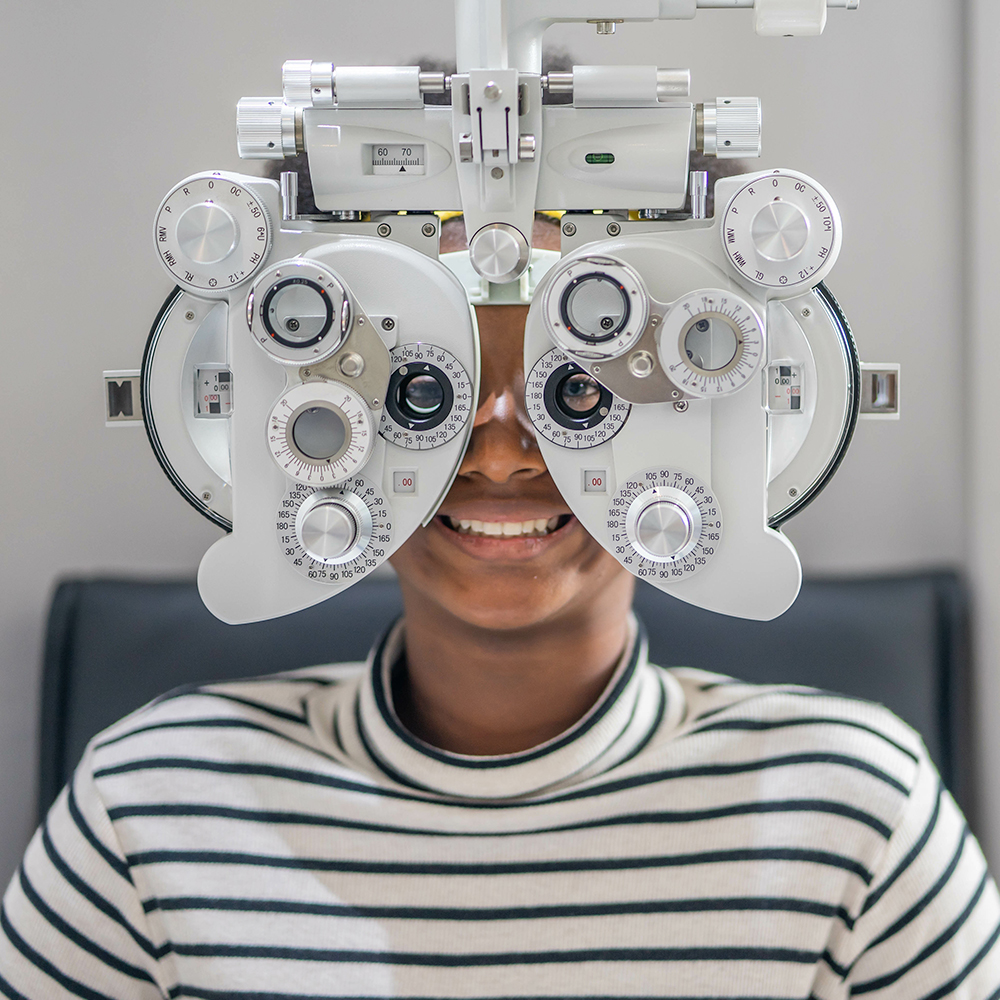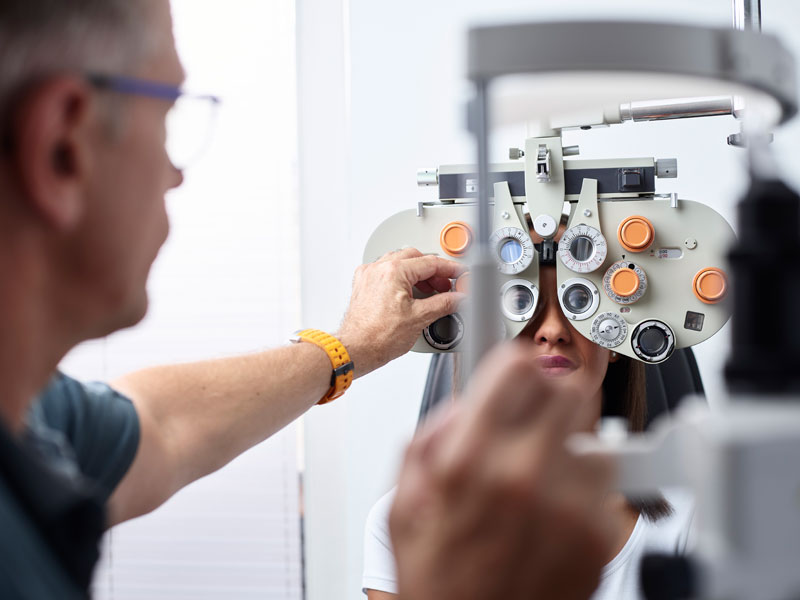Discover Advanced Solutions at Opticore Optometry for Eye Wellness
Discover Advanced Solutions at Opticore Optometry for Eye Wellness
Blog Article
Discovering the Most Recent Technological Advancements in Optometry and What They Mean for Eye Doctors
In the ever-evolving area of optometry, recent technical innovations are improving how professionals come close to eye treatment. From the precision of Optical Comprehensibility Tomography to the nuanced insights offered by AI-driven diagnostic tools, these technologies are establishing new standards in person evaluation and treatment. Teleoptometry is poised to redefine availability, making sure that competence transcends geographical limitations. As these developments penetrate the technique, optometrists are encountered with the difficulty of welcoming these devices to improve patient end results. Yet, the concern continues to be: exactly how will these technical shifts redefine the roles and duties within the profession?
Innovations in Diagnostic Equipment
Progressing the area of optometry, developments in analysis tools have reinvented the means eye care experts evaluate and detect aesthetic problems and eye problems. The past years has witnessed significant technological innovations, allowing even more comprehensive and precise examinations. Optical Coherence Tomography (OCT), for example, offers high-resolution cross-sectional photos of the retina, enabling the early detection of illness such as glaucoma and age-related macular deterioration. This non-invasive imaging technique has actually come to be crucial in modern optometric technique.
Another key development is the introduction of sophisticated corneal topography systems, which map the surface area curvature of the cornea with accuracy. These devices are particularly helpful for fitting contact lenses and identifying corneal problems. Furthermore, electronic retinal imaging has transformed standard ophthalmoscopy, providing detailed, breathtaking views of the retina that help with thorough aesthetic assessments.
The growth of wavefront aberrometry has actually likewise been important, allowing the evaluation of refractive mistakes with unparalleled precision (Opticore Optometry). This technology assists in tailoring corrective lenses and improving surgical outcomes for refractive surgical procedures. Collectively, these diagnostic advancements encourage eye doctors to deliver remarkable patient treatment, guaranteeing very early intervention and customized therapy approaches, ultimately boosting aesthetic health and wellness end results
AI in Patient Administration
Structure on the foundation of sophisticated diagnostic devices, the incorporation of artificial intelligence (AI) in individual monitoring represents a transformative leap for optometry. AI systems are progressively used to boost efficiency, accuracy, and customization in patient care. By evaluating huge amounts of data, AI can determine patterns and predict potential ocular problems, making it possible for optometrists to tailor treatments better. This capacity is important in handling persistent eye diseases such as glaucoma and diabetic person retinopathy, where very early detection and constant tracking are key.
Moreover, AI-driven systems help with streamlined individual communications and management procedures. Automated organizing, virtual consultations, and customized follow-up strategies not just enhance patient contentment but likewise optimize time administration for professionals. These systems can triage individuals based upon the seriousness of their problems, ensuring that those in important need get timely interest.
Additionally, AI enhances decision-making by supplying eye doctors with evidence-based suggestions and treatment paths. By incorporating information from electronic health documents, AI devices supply insights that inform clinical decisions, minimizing the risk of mistakes and boosting person outcomes. As AI remains to evolve, its function in patient management will likely broaden, improving the landscape of optometric care.
Developments in Retinal Imaging
In the world of optometry, retinal imaging has actually observed impressive technological improvements that are enhancing diagnostic abilities and client care. Technologies such as Optical Comprehensibility Tomography (OCT) and fundus photography have changed how optometrists analyze the retina and picture. OCT, particularly, provides high-resolution, cross-sectional images of the retina, enabling for the thorough exam of its layers. This capability is invaluable for very early detection and management of problems like glaucoma, diabetic person retinopathy, and age-related macular degeneration.
Improved imaging methods like OCT angiography are additional refining analysis accuracy. This non-invasive method maps blood circulation in the retina, providing important insights right into vascular health and wellness without the requirement for color shots. In addition, flexible optics innovation is being incorporated into retinal imaging systems to deal with ocular aberrations, providing unprecedented photo clarity. Such improvements facilitate the identification of min retinal adjustments that could represent illness progression.
In addition, developments in expert system are augmenting retinal imaging by enabling automated analysis of huge datasets. These systems assist eye doctors in determining patterns a measure of pathology, consequently improving diagnostic accuracy and effectiveness. Collectively, these advancements are transforming retinal imaging right into a cornerstone of modern eye care, enhancing end results and expanding restorative possibilities.
Teleoptometry's Expanding Function
Teleoptometry is progressively ending up being an essential part of eye care, driven by advancements in electronic interaction and analysis devices. As optometry embraces digital transformation, teleoptometry helps with remote assessments, enabling optometrists to prolong their services past conventional borders. This is especially useful in underserved and country locations where accessibility to specialized eye treatment is usually restricted. By leveraging high-resolution video clip conferencing and advanced retinal imaging, eye doctors can carry out extensive eye examinations from afar, making sure timely medical diagnosis and treatment.
The combination of man-made intelligence (AI) more enhances teleoptometry, making it possible for the pop over here evaluation of aesthetic information and helping in the detection of ocular problems such as glaucoma and diabetic person retinopathy. AI-powered formulas can swiftly translate intricate imaging information, offering optometrists with beneficial understandings that reinforce professional decision-making.
Furthermore, teleoptometry sustains connection of care through smooth More Bonuses assimilation with electronic health and wellness records (EHRs), allowing optometrists to preserve detailed client histories. When consulting with different specialists., this makes sure that people get constant and customized care even.
Regardless of these advantages, challenges remain, including ensuring data safety and security and taking care of client expectations. Teleoptometry stands for a substantial stride towards more available, reliable, and patient-centered eye treatment. As technology advances, its duty is poised to broaden additionally.

Future Trends in Eye Care
A myriad of ingenious fads is set to improve the future of eye treatment, driven by technical advancements and the evolving requirements of clients. One considerable trend is the assimilation of fabricated intelligence (AI) in diagnostics, which promises to boost the accuracy and performance of eye evaluations. AI formulas can analyze huge amounts of data from retinal images, possibly discovering problems like diabetic retinopathy and glaucoma earlier than typical methods.
Furthermore, individualized medication is obtaining grip in optometry, with hereditary testing notifying customized therapy plans. This approach aims to enhance client results by tailoring interventions to specific hereditary profiles. Wearable innovation, such as clever contact lenses, is also coming up, providing real-time tracking of intraocular stress or sugar degrees, therefore supplying constant understandings right into eye and systemic wellness.
The fostering click here to read of enhanced reality (AR) and virtual fact (VR) in training and client education is one more emerging pattern. These innovations provide immersive experiences that can enhance understanding and skills both for eye doctors and individuals. As these patterns progress, eye doctors should stay abreast of technological improvements to provide cutting-edge care, making certain enhanced patient outcomes and satisfaction in the vibrant landscape of eye care.
Verdict

Collectively, these diagnostic advancements encourage eye doctors to deliver premium individual care, making certain very early treatment and customized treatment approaches, ultimately improving aesthetic wellness end results.

As these technologies continue to evolve, eye doctors should adapt and include them right into technique, inevitably maximizing process performance and boosting the standard of eye care delivered to patients.
Report this page